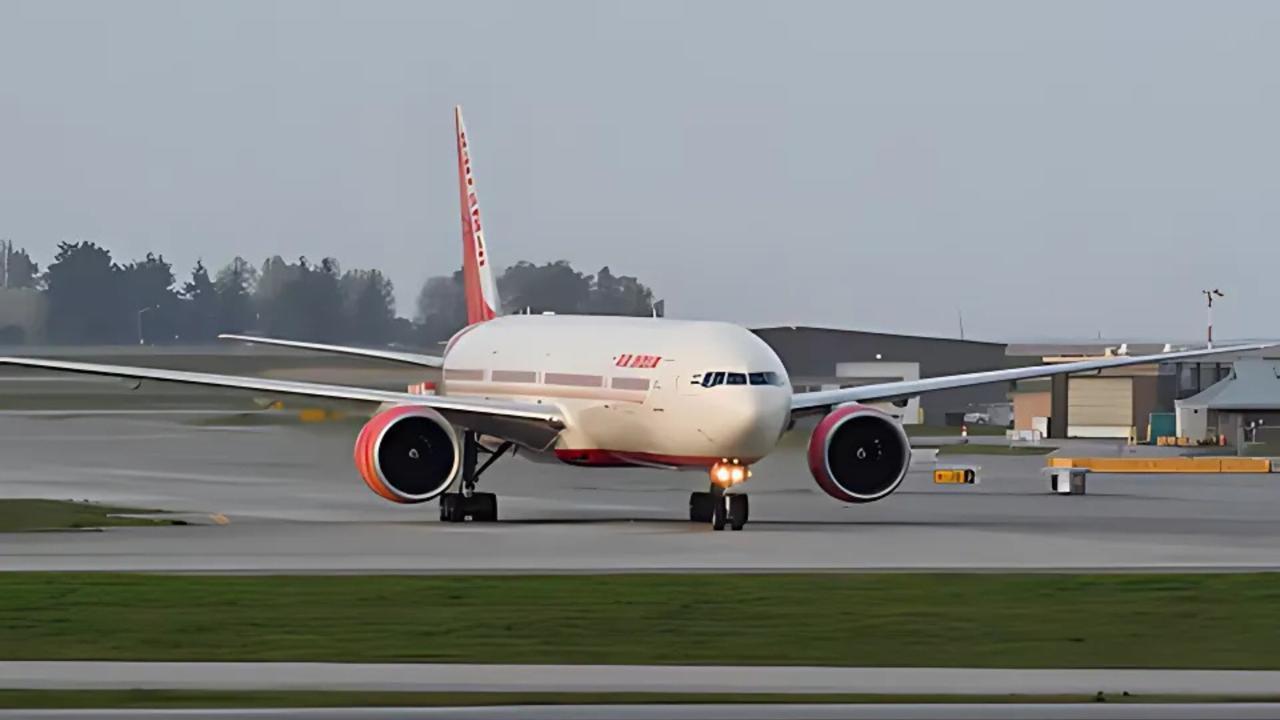
Post by : Amit
Photo: Reuters
Pioneering Sustainable Ground Operations
In a significant move towards greener aviation practices, Airbus has successfully completed trials of its TaxiBot concept using A320 family aircraft, signaling a potential shift in how aircraft move on the ground. The innovation, designed to reduce fuel consumption and cut emissions during airport taxiing, comes at a time when the aviation industry is under increasing pressure to meet sustainability goals.
The European aerospace giant confirmed that the testing phase demonstrated the viability of the TaxiBot system, a semi-robotic, towbarless vehicle that enables aircraft to taxi without using their main engines. With this technology, Airbus aims to support airlines and airports in achieving lower operational costs and a reduced environmental footprint.
How the TaxiBot Works
The TaxiBot is a unique hybrid-electric tractor that links to an aircraft’s nose gear and tows it from the gate to the runway, or vice versa, without the need to engage the aircraft’s jet engines. Pilots remain in control of steering and braking from the cockpit, ensuring safety and familiarity.
Unlike conventional towing vehicles, the TaxiBot is designed for in-service operation, meaning it can move aircraft during actual flight preparations rather than just for maintenance or repositioning. This distinction makes it a potentially transformative technology for daily airline operations.
The recent trials, conducted with Airbus A320 family jets, including the popular A320neo, provided critical insights into the system’s integration, performance, and operational feasibility. According to Airbus, the tests were “highly successful,” setting the stage for broader discussions with airlines and regulatory bodies.
Aiming for Fuel and Emissions Savings
Taxiing with jet engines is a relatively small but significant contributor to an aircraft’s total fuel burn and CO₂ emissions. On average, short- and medium-haul flights spend between 15 and 30 minutes taxiing between gates and runways. During this time, engines consume fuel without contributing to actual flight performance, producing unnecessary emissions and adding to airline costs.
Airbus estimates that adopting TaxiBot technology could cut fuel consumption during taxi operations by up to 85%, translating to thousands of liters of fuel saved per aircraft annually. This also corresponds to a considerable reduction in carbon dioxide emissions, making it an attractive option for airlines seeking to meet stricter environmental standards.
Environmental and Financial Benefits in Focus
The drive toward TaxiBot technology is part of Airbus’s broader commitment to achieving net-zero carbon emissions by 2050. Reducing emissions on the ground is an important step in the overall strategy, especially as sustainable aviation fuels (SAF) and electric or hydrogen-powered flight remain longer-term solutions.
For airlines, the financial appeal of TaxiBot lies in reduced fuel consumption and lower engine maintenance costs. Frequent stop-start taxiing wears down engines, and minimizing this phase can extend engine life while cutting operating expenses.
Airports, too, stand to benefit from reduced noise and lower emissions, which can be critical in meeting local environmental regulations and community expectations.
Scaling Up the TaxiBot Concept
While the TaxiBot has undergone successful trials with narrow-body aircraft, including the A320 family, Airbus is now exploring ways to scale the technology for broader use. Discussions are reportedly underway with regulatory authorities and ground services providers to develop certification pathways and operational guidelines.
The company is also assessing the business case for introducing TaxiBot technology at major hub airports, where the environmental and operational benefits would be most pronounced.
Airbus’s efforts align with a growing industry focus on sustainability, as airlines increasingly look for ways to green every aspect of their operations—not just flight phases but also ground movements, maintenance, and infrastructure.
Industry-Wide Sustainability Push
The TaxiBot trials reflect a broader push within the aviation industry to adopt eco-friendly innovations. From electric ground support vehicles to more efficient terminal operations and sustainable jet fuels, every aspect of the aviation ecosystem is being re-examined.
Airbus’s rival, Boeing, along with several smaller aviation startups, are also exploring solutions aimed at reducing emissions on the ground. Some airports have already introduced electric taxiing systems or trialed similar tow-vehicle concepts.
However, Airbus’s endorsement and successful testing of the TaxiBot provide a significant boost to the technology’s prospects for widespread adoption.
Challenges and Next Steps
Despite the promising results, industry experts note that several hurdles remain before TaxiBots become a common sight at airports worldwide. Infrastructure changes, training requirements, safety certifications, and the initial cost of deploying such systems could slow down adoption.
Moreover, the variability of airport layouts and congestion patterns means that a one-size-fits-all solution may not be feasible. Each airport may need tailored operational procedures to integrate TaxiBot usage without disrupting existing workflows.
Nevertheless, Airbus remains optimistic that with continued collaboration between manufacturers, airlines, and airport authorities, these challenges can be overcome.
A Vision for a Cleaner Aviation Future
The successful trials of the TaxiBot system underscore Airbus’s vision of an aviation industry where efficiency and sustainability go hand in hand. By tackling emissions not just in the air but also on the ground, Airbus is taking a holistic approach to climate action.
As the aviation sector strives to meet increasingly ambitious environmental targets, innovations like the TaxiBot could play a crucial role in making air travel greener, quieter, and more cost-effective. The next few years will likely see more airlines and airports exploring this technology as part of their broader sustainability strategies.
For now, the TaxiBot's smooth taxi tests with A320 jets mark a step forward in aviation's ongoing journey towards a cleaner, smarter future.
A320 jets, Aviation










Advances in Aerospace Technology and Commercial Aviation Recovery
Insights into breakthrough aerospace technologies and commercial aviation’s recovery amid 2025 chall

Defense Modernization and Strategic Spending Trends
Explore key trends in global defense modernization and strategic military spending shaping 2025 secu

Tens of Thousands Protest in Serbia on Anniversary of Deadly Roof Collapse
Tens of thousands in Novi Sad mark a year since a deadly station roof collapse that killed 16, prote

Canada PM Carney Apologizes to Trump Over Controversial Reagan Anti-Tariff Ad
Canadian PM Mark Carney apologized to President Trump over an Ontario anti-tariff ad quoting Reagan,

The ad that stirred a hornets nest, and made Canadian PM Carney say sorry to Trump
Canadian PM Mark Carney apologizes to US President Trump after a tariff-related ad causes diplomatic

Bengaluru-Mumbai Superfast Train Approved After 30-Year Wait
Railways approves new superfast train connecting Bengaluru and Mumbai, ending a 30-year demand, easi